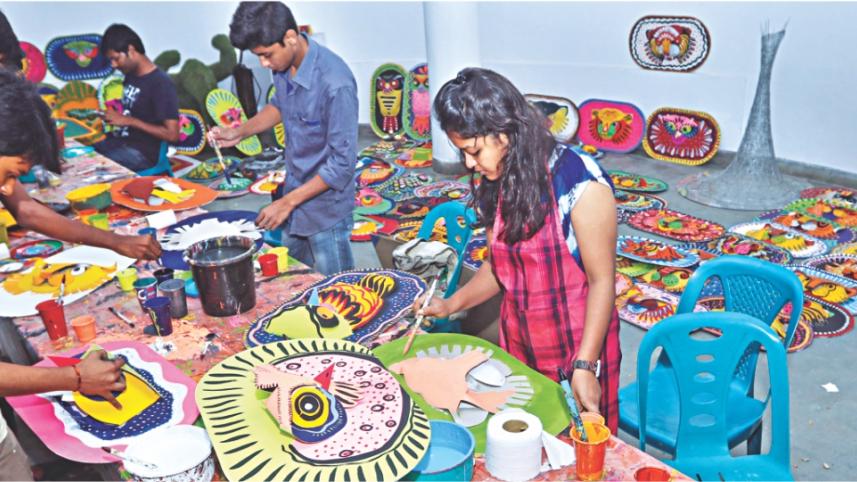A Procession for Hope

Photo: Prabir Das
To welcome the good, this year the 'Mongol Shobhajatra' was conducted with great zeal and festivity. Starting off in 1989, the traditional colourful procession, organised by the students of the Faculty of Fine Arts (FFA), University of Dhaka, has been regarded as one of the most joyous arrangements to celebrate the Pahela Baishakh every year.
The theme this year for 1423, was “Ontor Momo Bikoshito Koro Ontorotoro Hey”, (Let me thrive and enhance my core, oh my innermost one), a famous quote by Rabindranath Tagore.
“All the individuals need to develop a conscience and do the right thing," says Professor Nisar Hossain, the Dean of FFA. "Mere laws and law enforcers will not be able to correct a wrong and help run a country. “We have chosen this theme because we need to promote the development of own thoughts, interests, and morality to make a better Bangladesh.”
On the day of Pahela Baishakh 1423, the 'Mongol Shobhajatra' took over the streets of Dhaka University with giant replicas of mother and child, sampan boats, oxen, horses, tepa putul (indigenous clay doll), birds, elephants, colourful masks of royalty, tigers, owls and many more folk motifs as well as symbols from current events. The students, alumni and teachers of the FFA, University of Dhaka, and other festival goers from all walks of life joined the colourful procession, hoping for prosperity in the New Year.

This year, the preparation for the Mongol Shobhajatra started from March 17. Eminent artists like Rafiqun Nabi (Ronobi), Monirul Islam and Nisar Hossain inaugurated the preparation. The 17th batch of FFA leads the enormous job to make the event a successful one.
It is not so easy to make the giant replicas of the elements of nature from different shapes and designs. They usually take longer to prepare than the masks. At first the frame is made with bamboo, often straw is used for wrapping the structure, and then, it is covered with papers. Finally, after attaching separate parts of the structure, for example- wings, tails and many other essential components, the frame is covered with colourful papers or painted on.
Even though every year, the arrangements require plenty of funds, the Fine Arts students never go for corporate sponsorship. This way, they preserve their talents as well. Instead, the students raise funds by selling artworks, different kinds of motifs, masks, jewellery and much more. Many buy these artworks, not only because the artworks are made by the students themselves and are absolutely unique, but it is also a way to support the whole event.
This year, everyone hoped to strike a better balance between nature and mankind. People from all religions, backgrounds and walks of life were expected to raise their voice against violence against women, children, fundamentalism and all the negativities around.




 For all latest news, follow The Daily Star's Google News channel.
For all latest news, follow The Daily Star's Google News channel.
Comments